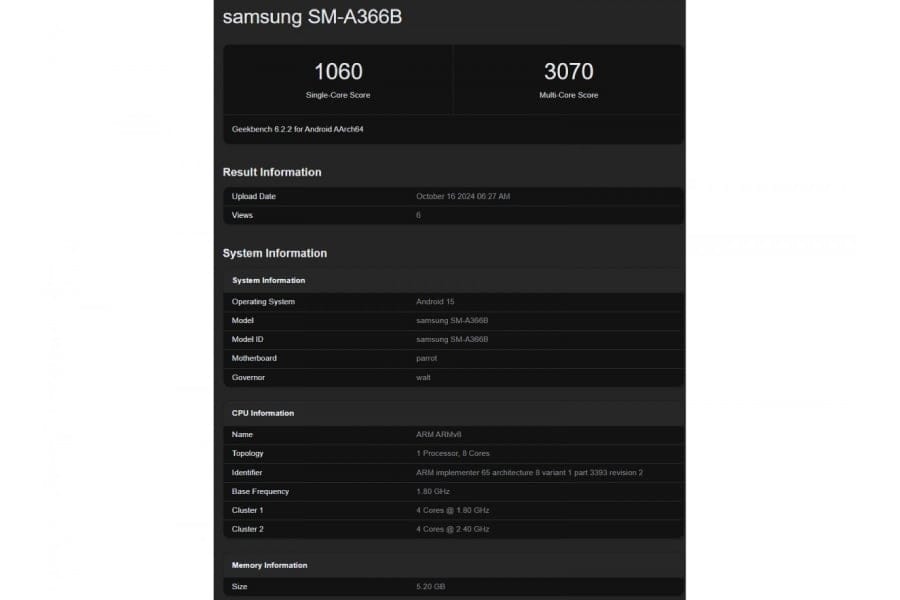Samsung introduced its mid-range Galaxy A35 5G smartphone in March this year, and now it seems the company is gearing up for its next iteration. The Galaxy A36 has surfaced on the performance benchmarking platform, Geekbench, revealing some intriguing details about its specifications and software.
Galaxy A36 5G on Geekbench
The device is listed under the model number SM-A336B. Following Samsung’s usual naming conventions, it’s safe to say this is indeed the Galaxy A36 5G. The device has completed several tests on the benchmark, and while one of its performance scores is available below, the most exciting news is that Samsung appears to be testing the smartphone with Android 15 already installed.
Android 15 and Release Timing
Recently, Google launched Android 15 for its Pixel devices, and Samsung is anticipated to release its version alongside the Galaxy S25 series in January. If the Galaxy A36 launches with Android 15 out of the box, it’s likely to debut soon after the S25 series, potentially around the same time as the Galaxy A35. Moreover, it is expected that the Galaxy A36 will receive up to six years of Android and security updates, mirroring what even the entry-level Galaxy A16 5G provides.
The benchmark indicates the device has 6GB of RAM, although there may also be an 8GB variant available at launch.
Chipset Details and Performance
As for the processor, the details are still a bit murky. The benchmarks show an octa-core CPU configuration, consisting of four high-performance cores clocked at 2.4GHz and four efficiency-focused cores at 1.8GHz. Graphics duties are managed by an Adreno 710 GPU. This suggests that the chip might be either the Snapdragon 6 Gen 3 or the Snapdragon 7s Gen 2, both manufactured using Samsung Foundry’s 4nm technology.
Earlier this month, we were the first to disclose that Samsung had begun development on the Galaxy A36. We found two models in the IMEI database: SM-A366B/DS and SM-A366U. The first model is the global variant with dual SIM capabilities, as indicated by the “/DS” suffix, while the latter is intended for the US market.


Leave a Reply